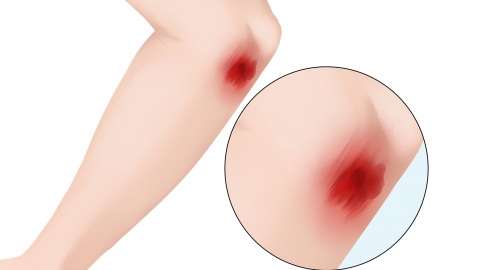How to treat an abrasion
Abrasion is a common minor injury in daily life. Methods for treating abrasions include cleaning the wound, disinfection, stopping the bleeding and dressing, protecting the wound, and applying ointment. The detailed approach is as follows:

1. Clean the wound
Immediately after the abrasion, follow medical advice to rinse the wound with buffered physiological saline or running clean water to remove dust, dirt, and other impurities from the wound surface. The rinsing pressure should be moderate to avoid causing secondary damage to the wound.
2. Disinfection
After cleaning the wound, under a doctor's guidance, disinfectants such as iodine tincture, hydrogen peroxide solution, or povidone-iodine solution can be applied thoroughly to the wound. Disinfection should be performed by applying the disinfectant from the center of the wound outward to avoid transferring bacteria from the periphery into the wound.
3. Stop the bleeding and dress the wound
If there is bleeding associated with the abrasion, apply pressure to the wound for several minutes using sterile gauze or a sterile cotton ball until the bleeding stops. Shallow abrasions may be left uncovered to allow natural drying. However, if the abrasion covers a large area, is deep, or is subject to friction, dressing the wound is necessary.
4. Protect the wound
During the healing process, avoid contact between the wound and water or contaminants. If contact with water is unavoidable, use waterproof dressings to protect the wound. Additionally, avoid scratching or peeling the wound to prevent interference with the healing process.
5. Apply ointment
After disinfecting the wound, under a doctor's recommendation, apply certain ointments that promote wound healing, such as aureomycin ointment or erythromycin ointment, to prevent infection and promote the growth and repair of epithelial cells.
During the recovery period, maintain a balanced diet and consume more protein-rich foods to aid wound healing. Avoid eating spicy or irritating foods, which may interfere with the healing process.





